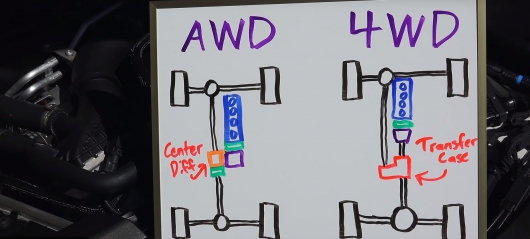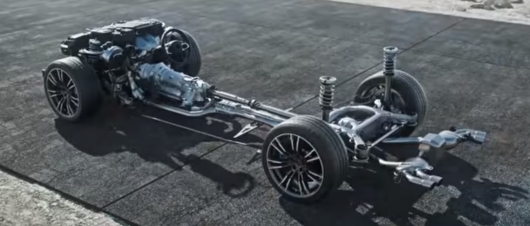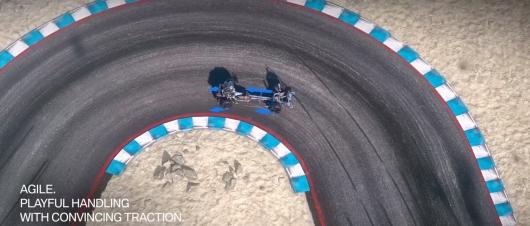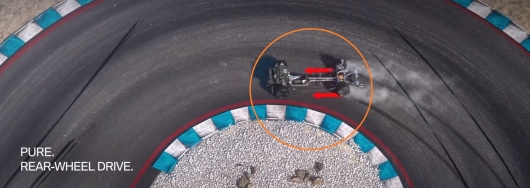That’s the difference between AWD and full real 4×4 drive
The terms “all-wheel drive AWD and full time 4WD or 4×4” are not interchangeable. Here’s why.

Often under four-wheel drive vehicle are used interchangeably different names: 2×2, 4×4, 6×6, 8×8, 12×12, 24×24, 4WD, AWD, Four-wheel drive, etc. But in fact, the drive system AWD should not be on a par with the all-wheel drive system on all four wheels (4×4 or 4WD).
The fact that between them there are key differences. Maybe you never heard about the difference between all wheel drive and all-wheel drive 4×4 (4WD), were afraid to ask about it or this information was not needed. But you should know that the all wheel drive and 4WD (4×4) mean different things, even though these systems represent a full-wheel drive vehicle.
So you can understand all the intricacies of car use, we suggest you watch the video from channel Engineering Explained, which briefly tells you what drive AWD and 4WD. If you don’t know English, don’t forget to turn on the subtitles and their translations.
In principle, the AWD system AWD (All-Wheel Drive – Automatically connected all-wheel drive) can send a variable amount of torque on each axle of the vehicle. Usually the driver controls this process.
That is electronics to decide how and when to transfer torque to each axle. As a result, in a certain time depending on the road conditions, the vehicle drive system AWD can be as all-wheel drive and partial drive, when the torque from the transmission is transmitted only on one axis.

All-wheel drive 4×4 or 4WD sends torque (fixed power) for each axis. And in cars with this type of drive, the drivers usually have the ability to disable the transmission of the torque to a certain axis of the wheels and enable.
So, how do these two types of four-wheel drive on modern cars and why it’s done different in the sense of technology?
Typically, the AWD system uses a center differential to distribute torque from the engine between two axles / axles of the wheels. All-wheel drive 4×4 (4WD), usually relies on the transfer case, which functions as a locking differential.
You’re probably wondering why today’s automotive industry there is a need in both of these drive systems? Indeed, in two systems, one goal is to distribute the torque and power between all four wheels. But without these systems the auto world would be boring and wrong.

It all depends on what kind of car it is. For example, if we’re talking about all-wheel drive 4×4 (4WD), this system of torque transmission is more suitable for SUV and other vehicles requiring low thrust. For example, a 4×4 drive is indispensable on the roads, because the system is sending a constant (fixed) power each wheel.
In the end, regardless of which wheel has more traction, the 4×4 system ensures obtaining the necessary torque to each wheel. This helps prevent the stuck car, which is indispensable on the roads.
Unfortunately, very often all-wheel drive 4WD (4×4) is not ideal on a normal asphalt road. The reason is the same. This drive is perfect and fully effective only on the roads.

For example, when driving on a smooth asphalt road when cornering the wheels of the vehicle equipped with all-wheel drive 4×4, rotate at different speeds, causing the system tries to give each wheel the maximum torque to align the speed of rotation of the wheels. This is a very difficult driving on normal asphalt and does not contribute to the perfect handling.
That’s why most cars usually have a two-wheeled mode of transmission of torque (rear or front wheel drive). That is, on a normal asphalt road power transmission only in one axis is more preferable.

All-wheel drive AWD is great for use on normal roads, as it can automatically send power to the wheel (or wheels), which is in most need at a particular point in time.
Some AWD systems have a fixed torque split between front and rear axle, but despite that they have no problems with cornering as vehicles with 4WD (4×4), as they rely on the differential, not the transfer case.

Of course, there are many different types of systems all-wheel drive AWD and 4×4. But despite it all kinds of AWD systems significantly in meaning differ in its meaning from all types of 4WD systems.
In the video channel Engineering Explained as an example, uses a new BMW M5, which has the AWD system AWD, working with various electronics and mechanical components is almost exactly how the 4WD system on SUVs.
But despite this, as the automakers have tried to bring all-wheel drive system AWD to 4×4 systems still these are different in their purpose actuators are designed for different types of cars.
